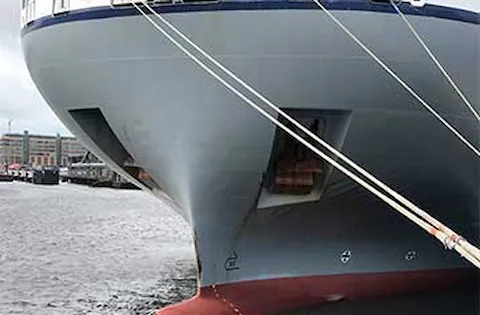New SOLAS requirements for safe mooring
SOLAS II-I Reg. 3-8 “Towing and mooring equipment” was amended by the Maritime Safety Committee MSC.102 in 2020 and enters into force on 1 January 2024. As a result, two new guidelines have been created: MSC.1/Circ.1619, MSC.1/Circ.1620 and MSC.1/Circ.1175, Guidance on shipboard towing and mooring equipment. Read more about the amended safe mooring requirements in this statutory news.
Relevant for shipowners and managers, flag states, shipyards and suppliers.
To reduce serious and fatal accidents related to the handling of mooring lines or equipment used for mooring operation, the MSC introduced new requirements on the design, inspection, and maintenance of mooring equipment (lines). The two guidelines on safe mooring are:
- The MSC.1/Circ.1619, Guidelines on the design of mooring arrangements and the selection of appropriate mooring equipment and fittings for safe mooring, which will affect new buildings
- The MSC.1/Circ.1620, Guidelines for inspection and maintenance of mooring equipment including lines, which will be a retroactive requirement and will therefore affect existing vessels.
A list of the typical issues detected:
Applicable for all ships- Mooring operation procedure, inspection and maintenance plan were not available on board.
- Wrong setting of mooring winch brake holding strength.
- Selecting higher minimum breaking load (MBL) of mooring rope for replacement.
- The MBL of the mooring line was not in accordance with the recommended values in the corresponding approved equipment number in IACS Rec. 10; in many cases, a higher MBL rope was used.
- The marked safe working load (SWL) of the mooring fitting was not consistent with the MBL of the mooring ropes.#
- The hull support foundation of the mooring fitting did not have sufficient capacity to withstand the design load or marked SWL.
The owner shall prepare documents listed in DNV’s “Guidance for maintenance and inspection of mooring equipment” (see link below). This guideline corresponds to the new MSC.1/Circ.1620.
Early compliance statements can be requested through a remote survey. The occasional survey (SMO.O) to verify compliance with MSC.1/Circ.1620 is available through a remote survey request by including RR Ref. 1059a. More details can be found in DNV’s Compliance Planner, available to our customers in Fleet Status on Veracity.
An additional and voluntary class notation MO (qualifiers: D for newbuilding and IM for existing ships) will be offered for all ships. This notation class complies with the amended requirements in SOLAS II-I Reg.3-8 from 1 January 2023, and the two corresponding guidelines MSC.1/Circ.1619 and 1620.
Recommendations
We recommend our customers to consider early compliance with the new safe mooring requirements, especially for vessels which are scheduled to dry dock before 2024.
References
- SOLAS II-I Reg.3-8, Towing and mooring equipment
- MSC.1/Circ.1619, Guidelines on the design of mooring arrangements and the selection of appropriate mooring equipment and fittings for safe mooring
- MSC.1/Circ.1620, Guidelines for inspection and maintenance of mooring equipment including line
- MSC.1/Circ.1175, Guidance on shipboard towing and mooring equipment
- Safe mooring theme page by DNV
Contact
- For customers:
DATE - Direct Access to Technical Experts via My Services on Veracity. - Otherwise:
Use our office locator to find the nearest DNV office.
